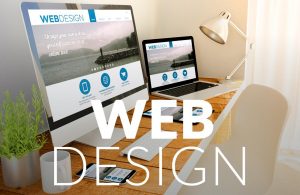
Designing your business site can be a difficult proposition. You’ve got to handle the expectations of lots of stakeholders, and you can typically strike challenges that prevent new ideas from emerging.
I was the style supervisor for a large company site for nearly six years, and during that time, I found myself losing perspective of what our target market really required. Call it “tunnel vision.” When you work on the same site, it often helps to take a step back and think through new methods. That’s the purpose of this blog post.
Free Workbook: How to Plan a Successful Website Redesign
What follows are some suggestions, techniques, faster ways and basic recommendations for developing excellent site style. Can you try any of these to take your website design to the next level?
1) Design in tones of gray, then include color
If your web designer develops wireframes prior to visual styles, then you understand the worth of starting with shades of gray. Turn your wireframe into a grayscale visual design, add your photography, then carefully add color to style aspects one at a time.
This will avoid an “overdesigned” website and assistance to put prominence on simply the products that require it.
2) Use Keynote (Mac) to produce rapid page prototypes
You do not need Photoshop to develop quick prototypes of web pages, landing pages, call to actions or other web user interface aspects. There’s an entire underground movement around using Keynote (that’s Apple’s variation of PowerPoint) to produce mockups.
There’s even an online repository containing interface style templates for wireframing, prototyping and screening mobile and web apps in Keynote.
3) Add web font styles to your business style guide
It’s 2020, and if your business style guide doesn’t consist of web typefaces, then you need to check out adding those so your site has the same governance that corporate documents and security do.
If you have not checked out this yet, Google Fonts is a fantastic place to start. Discover an ideal web typeface and define usage in your business style guide so you utilize it regularly online
4) Bury those social media icons
You did all that work to get people to your website, and yet you’re inviting them to leave? That’s what you’re doing when you position social media icons in a popular location of your site, like in the header. Bury the icons in the footer.
If individuals are on your website, you desire them to stay, find out and maybe inquire about your services, not check out business picnic pictures and bowling getaways on Facebook. Social media must send out individuals to your website, not vice versa.
5) Ditch the slideshow/carousel
When the homepage slideshow/image carousel entered into fashion, it was a method to get great deals of information on the first page of your website. The issue is that the majority of people don’t stay on the page long enough to experience all of the tiles/messages.
What’s more is that the messages and images typically aren’t pertinent to your possibility’s very first go to. What’s the something a visitor should remove from their site to see? Promote that a person thing– typically what your business does in layman’s terms and ditch the rest.

6) Simplify navigation
Reducing your visitors’ options may seem counter user-friendly, but it can really help guide people to your most productive material. Instead of frustrating your site visitors with links to every page, simplify your navigation.
Get rid of dropdown menus and especially multi-tier dropdown navigation that just the most knowledgeable mouse user can browse, and go a step even more by reducing the variety of links in the header or sidebar of your site.
7) Remove sidebars
The sidebar has been an especially popular website design pattern for the last 10 years, particularly on blog sites. Lots of companies are finding that when they get rid of sidebars from their blogs, it encourages reader attention to the post and the call to action at the end.
Eliminating the sidebar on our business blog site has actually increased the number of clicks on a call to action graphics over 35%.
8) Get color motivation from nature
Struggling to find the perfect color mix for your site or a call to action graphic? Get your inspiration from nature. You can either utilize your own cam to photograph natural questions around you or find landscape images on the web, the usage a color picker to select a color. Nature’s color palette never fails.
9) Step away from the computer
I believe that good style begins with great preparation. Getting your ideas down on paper or on a whiteboard can help you repeat through a style, refining it and adding information as you go along. Drawing on a white board can also make the style procedure collaborative and permit other staff member to give input.
It’s also simple to remove pencil from paper or marker from a whiteboard and make quick modifications, and as soon as you have something concrete to deal with, snap a photo with your mobile phone and get to work on screen.
Drawing web design ideas on a whiteboard
10) Use Pinterest to develop mood boards
When you’re creating motivation and ideas for a new site, or you’re redesigning part of your website, you require a method to collect your motivation in one location for future referral.
Did you understand that you can utilize Pinterest to create a mood board of your preferred images, colors, designs, patterns, sample sites and idea material? Another excellent benefit of using Pinterest is that other designers create and share state of mind boards too, and they’ve currently curated lots of resources that you can utilize.

11) Increase your typeface size
Typography is exceptionally important in website design. Text is hard adequate to continue reading a computer system screen, so you need to make the important things stand out.
One method to do this is to increase your font style sizes, particularly for headings and essential blocks of text. Consider increasing the size of your typical font, too.
12) Use white space
It might be hard to believe that utilizing whitespace is a hack, however I assess sites every day that could utilize more whitespace. Not every blank area of the screen requires to be filled.
Even though whitespace and simplicity remain in style right now, a lot of companies try to stuff whatever into a little area, or even worse yet, “above the fold.” Give your style room to breathe, and your website visitors will be able to find things much easier.
13) Use the squint test
Desire a fast method to learn what’s most popular on your website? Back away from your computer screen and squint. Most everything will end up being fuzzy, and just the larger, colorful, more popular functions will be visible.
It’s stated that this technique helps a designer understand what a novice visitor may observe when he scans your website. Will the visitor notice what’s crucial?
